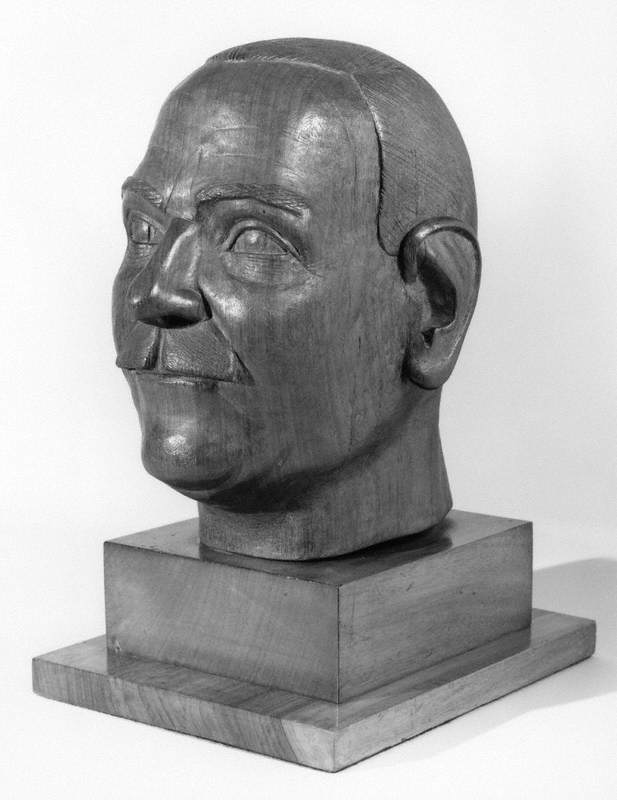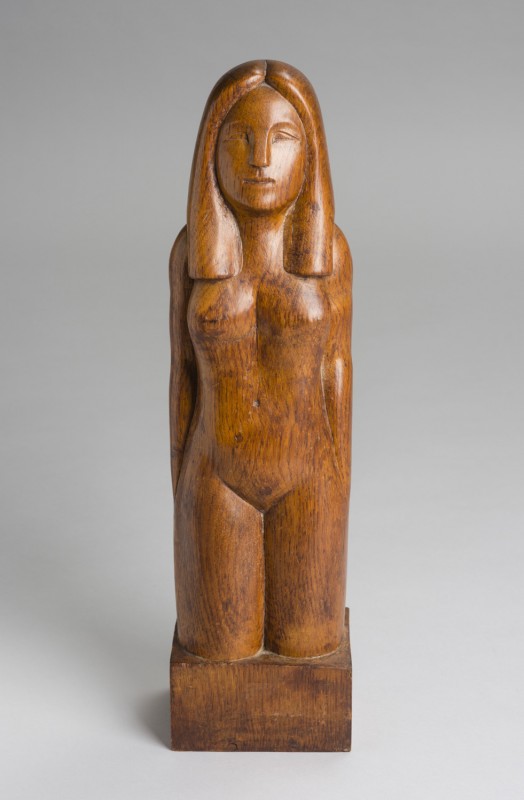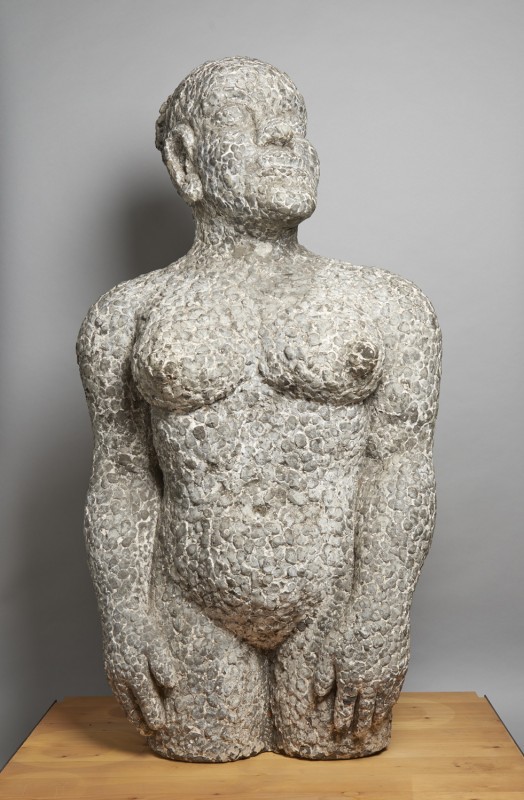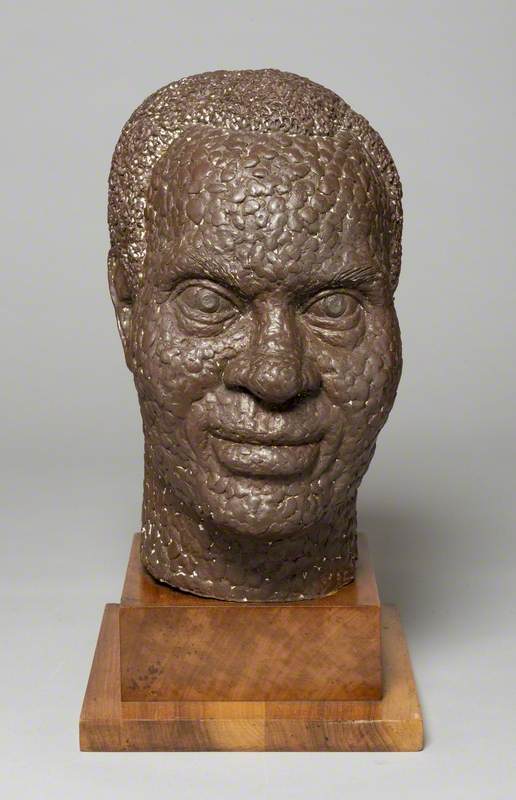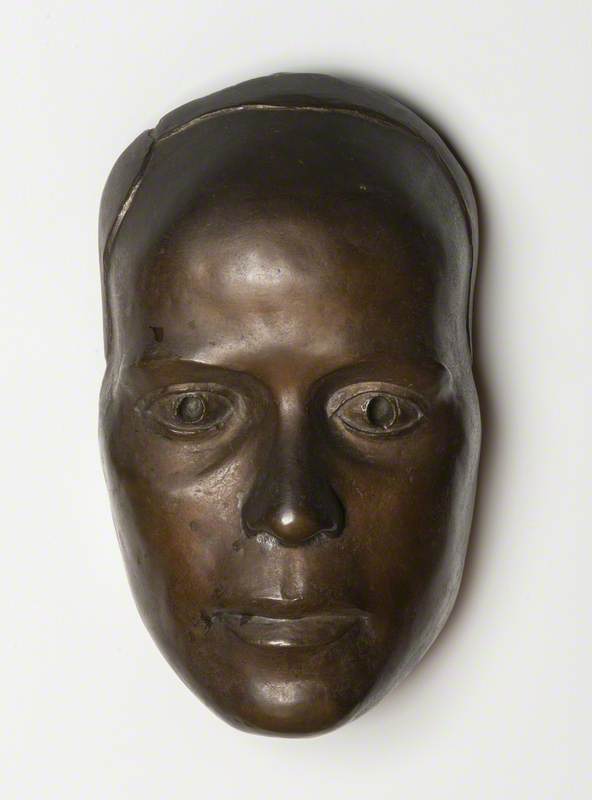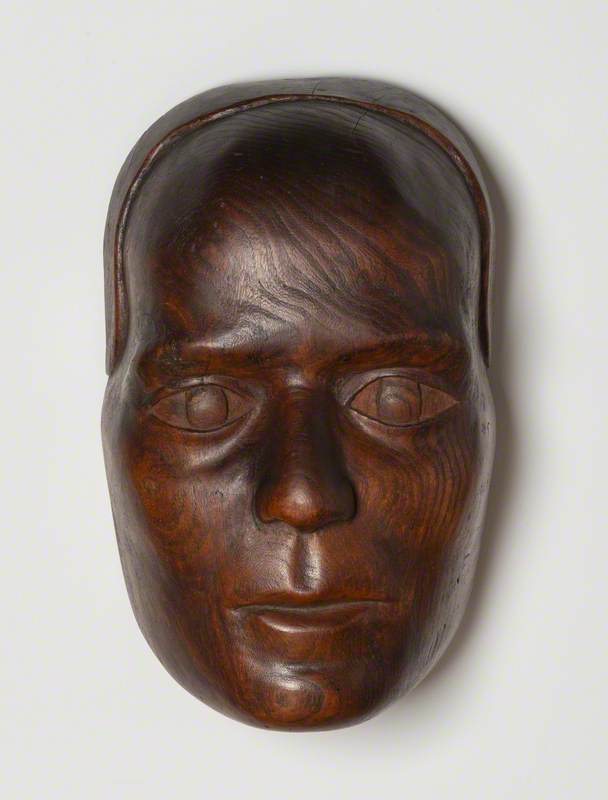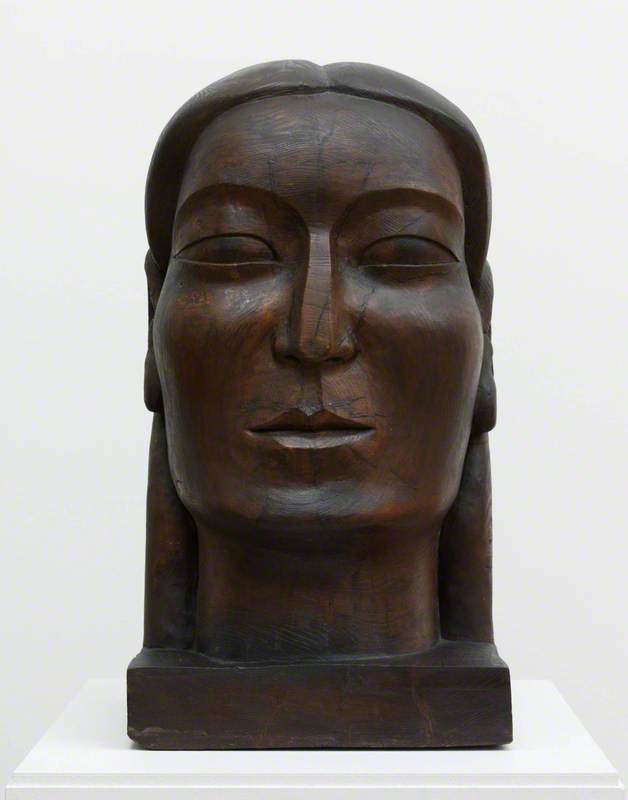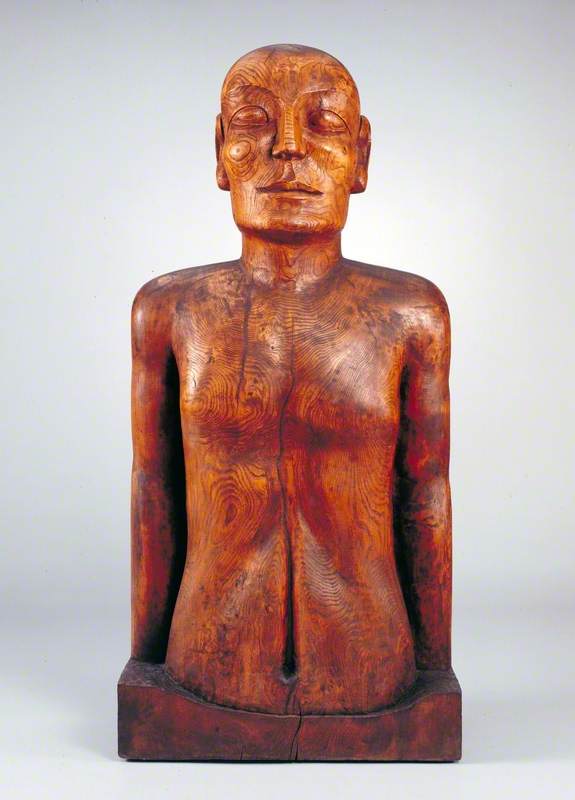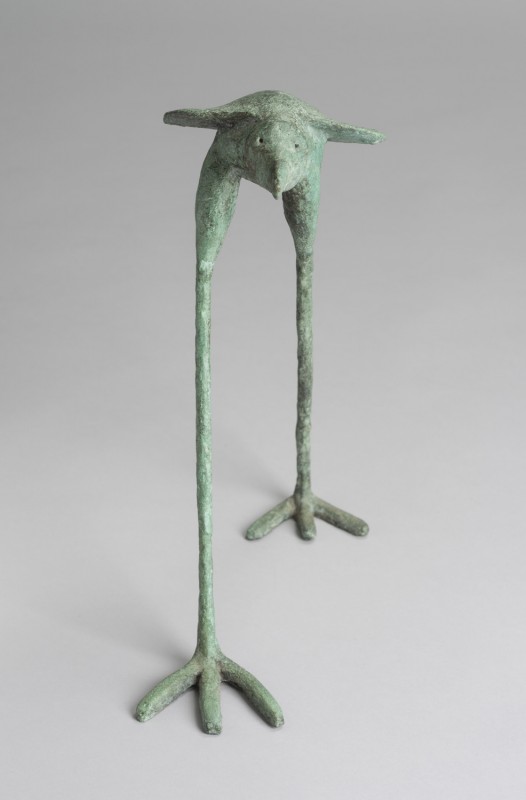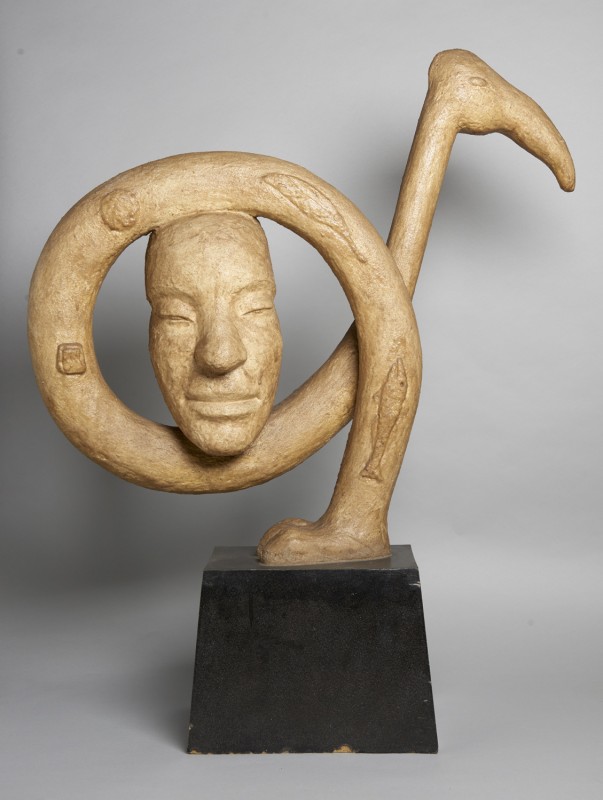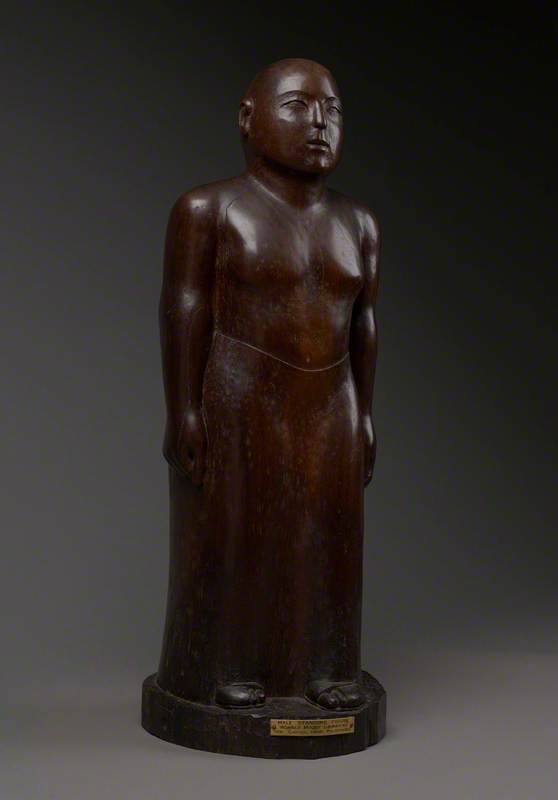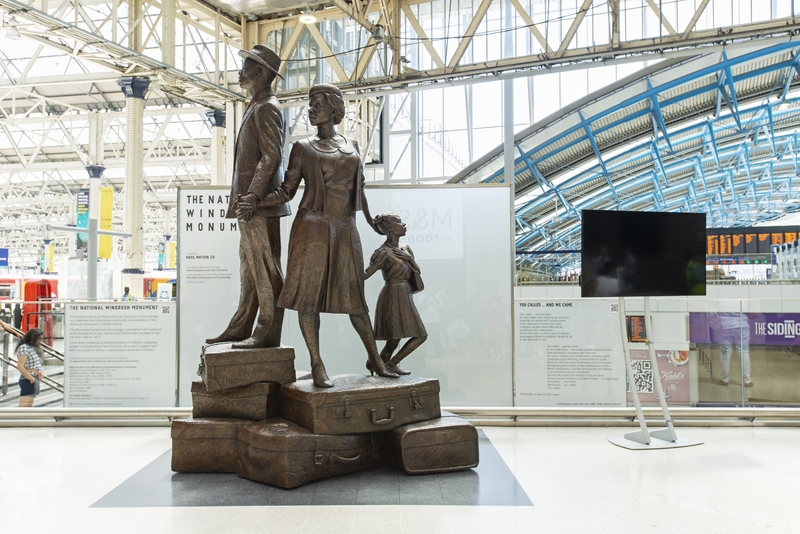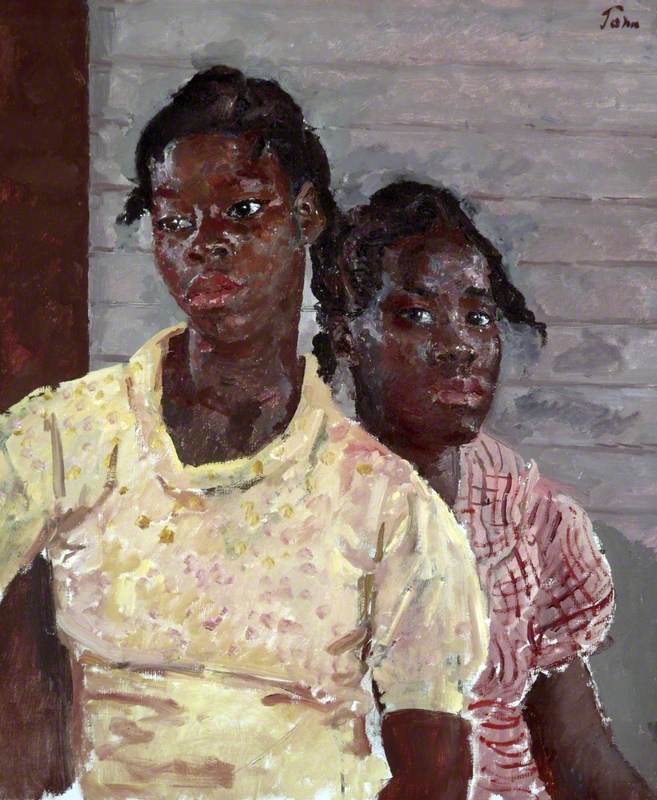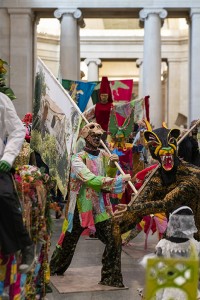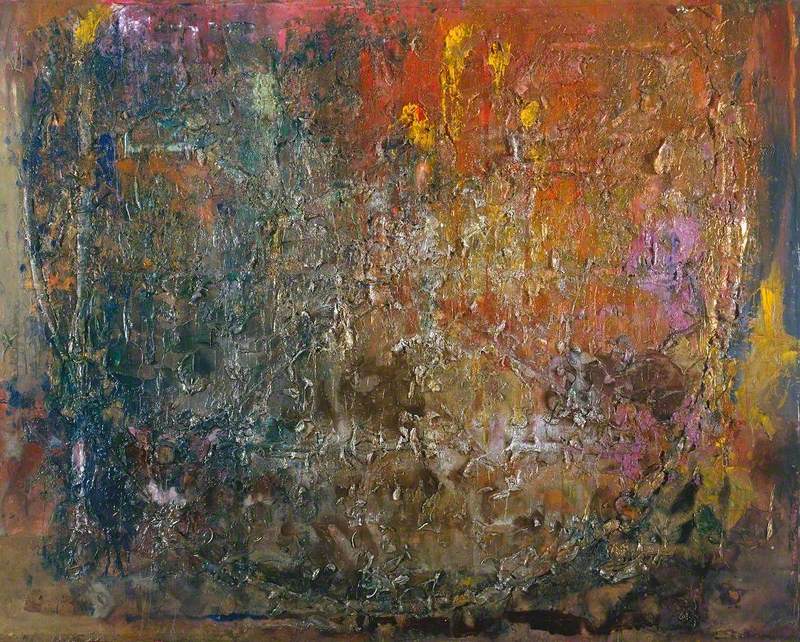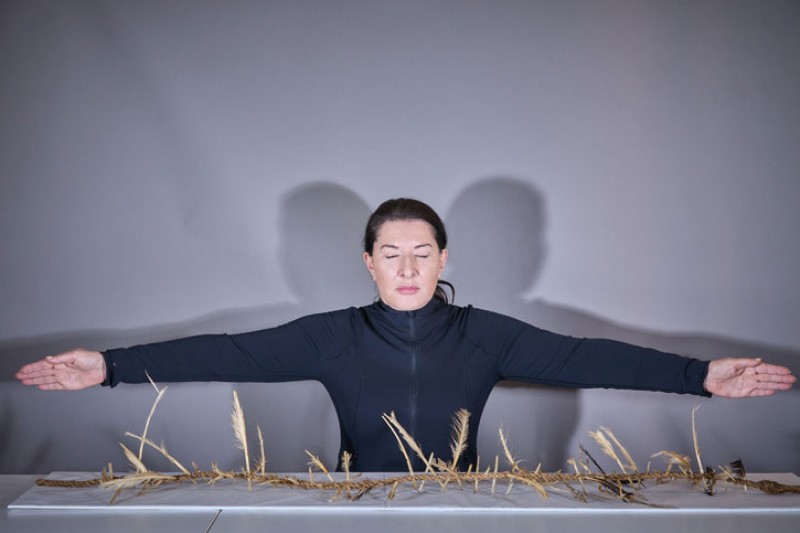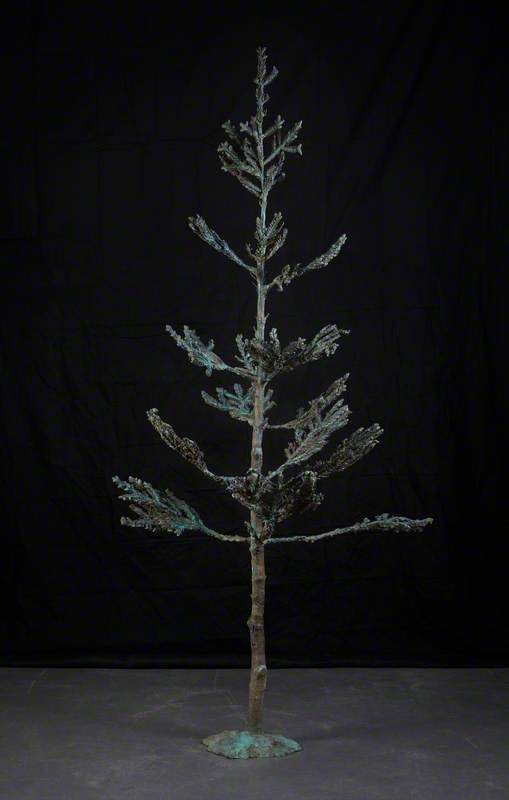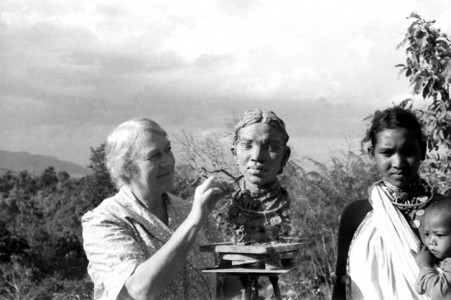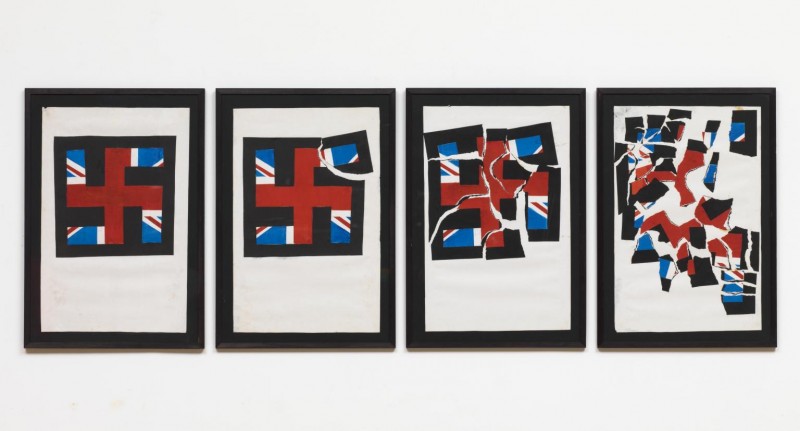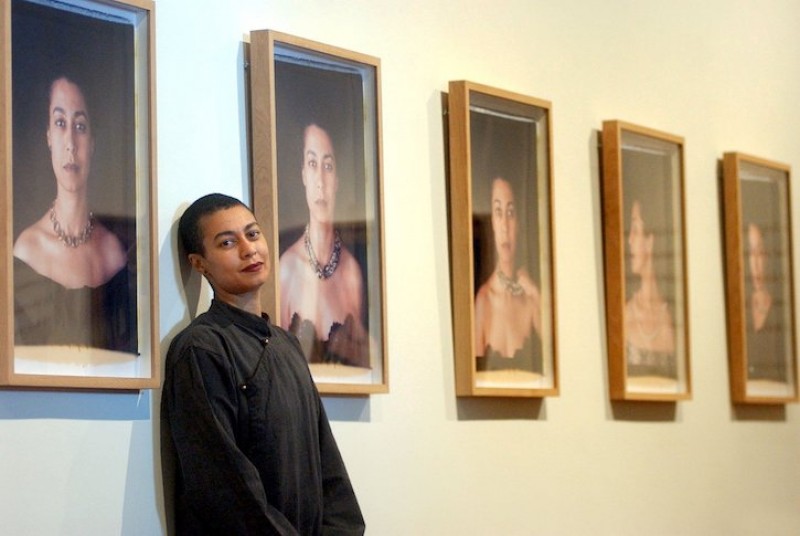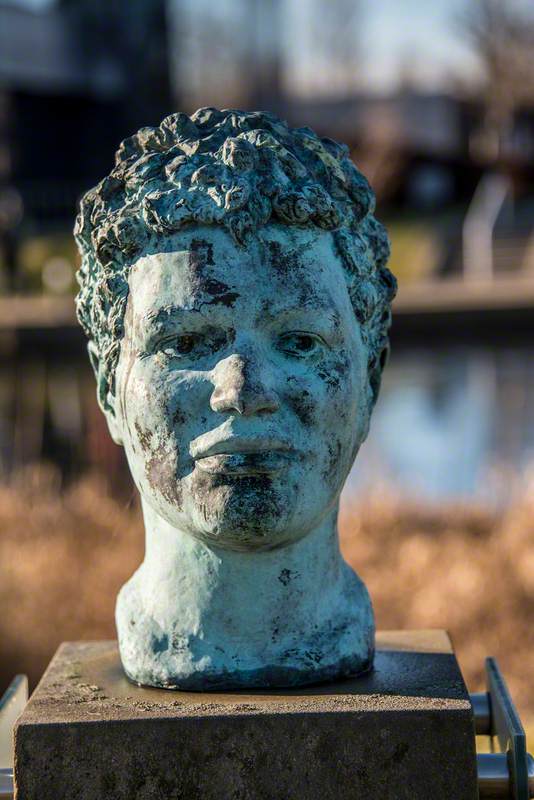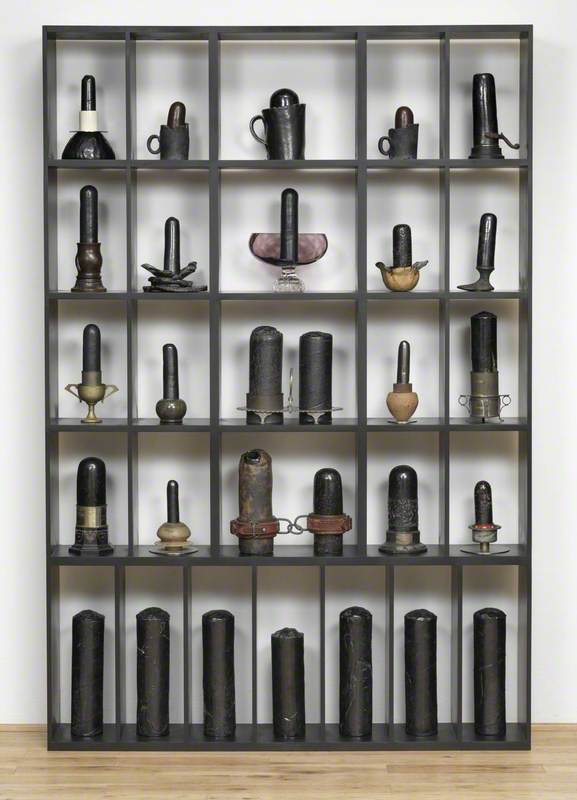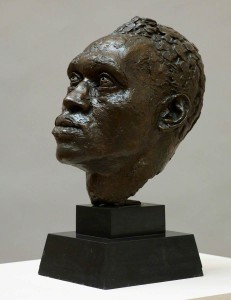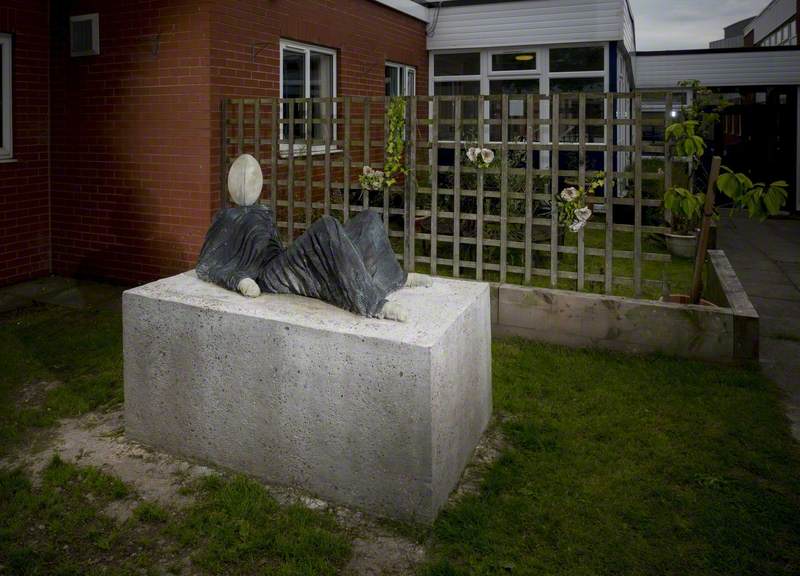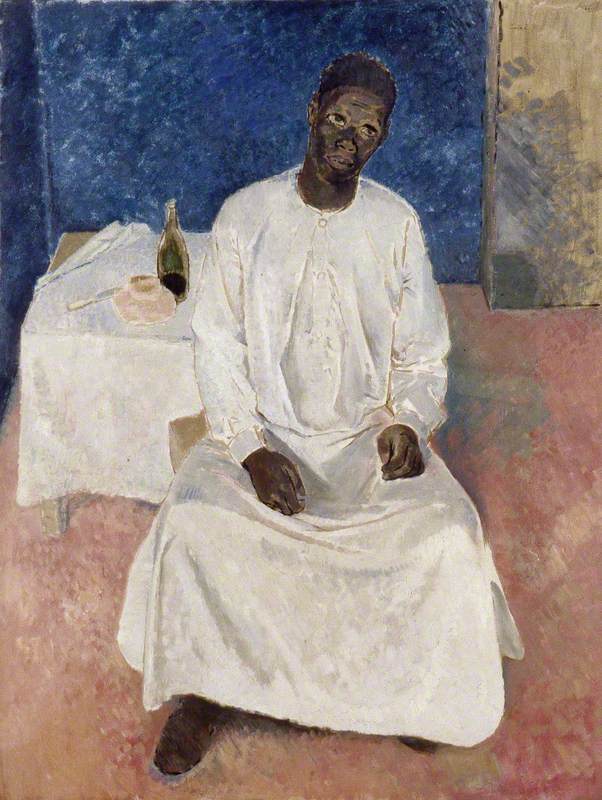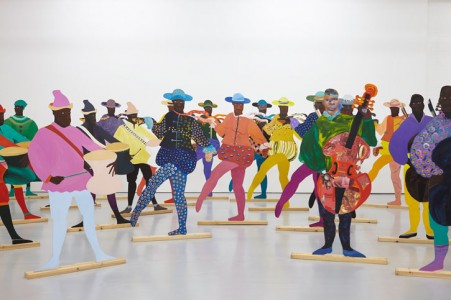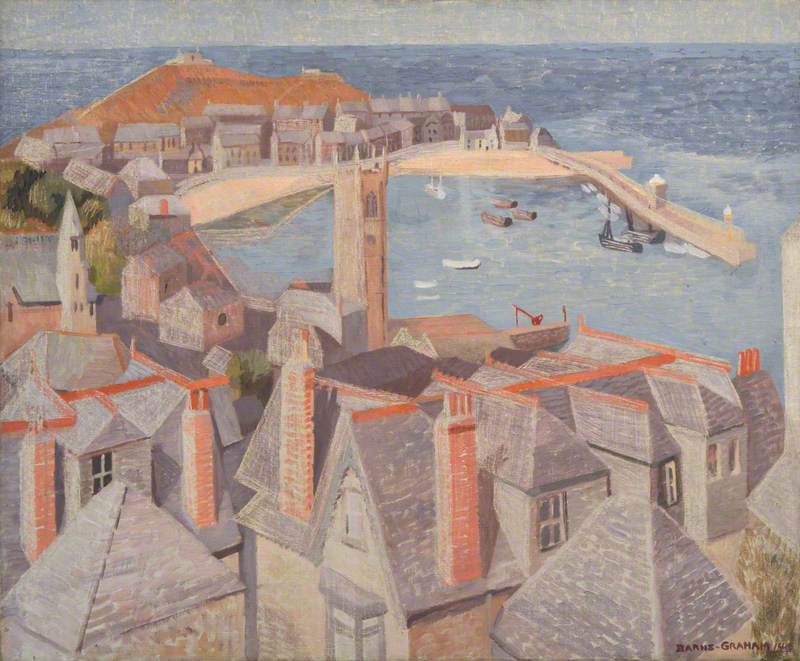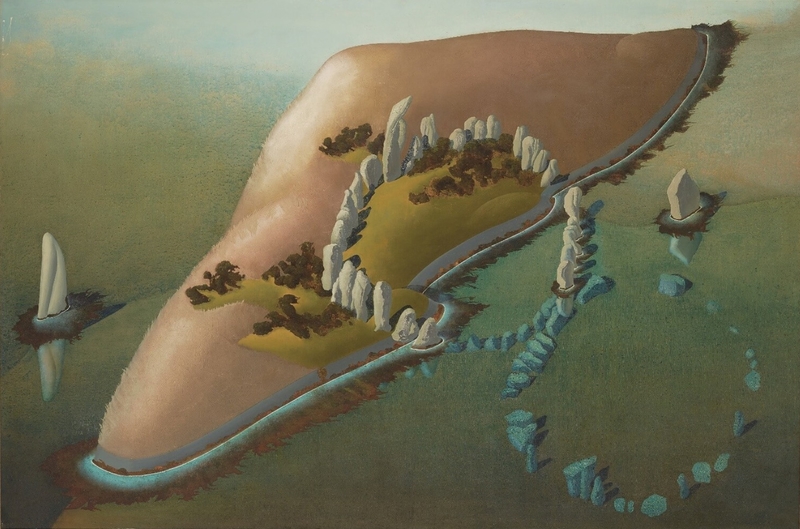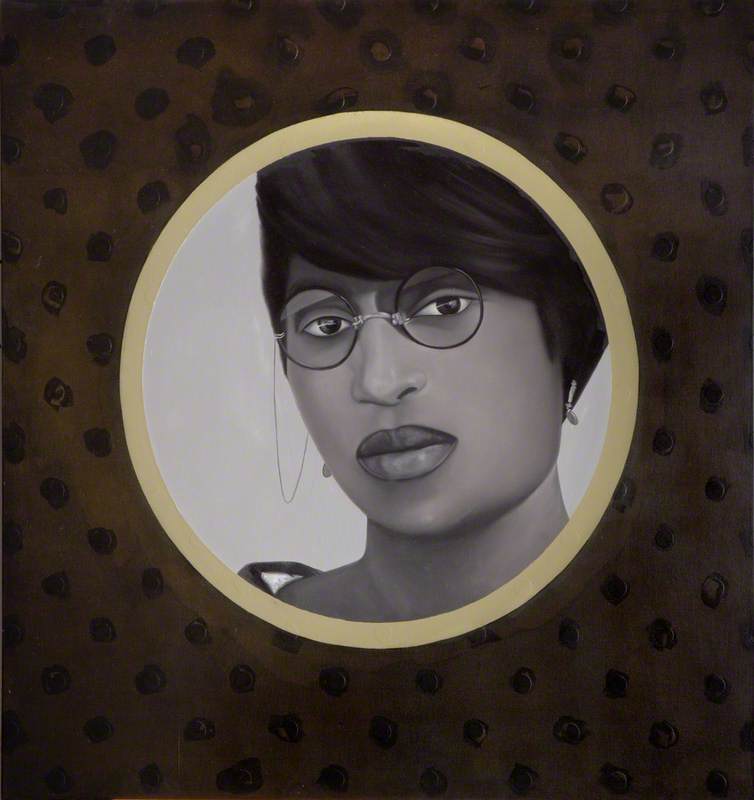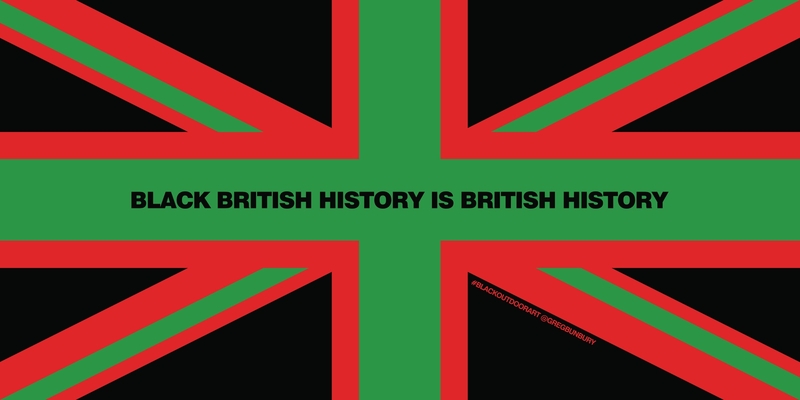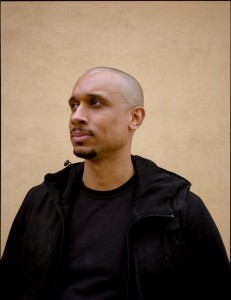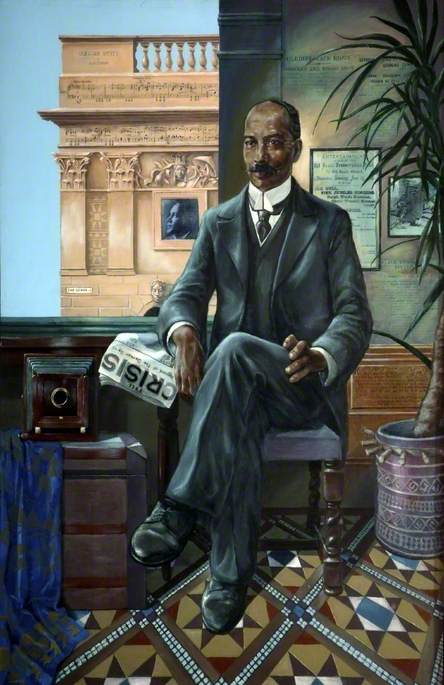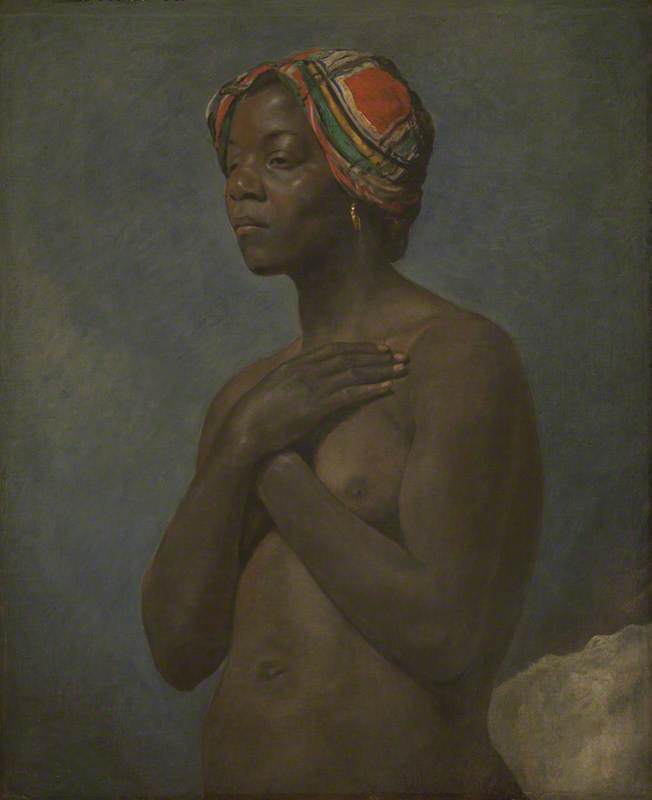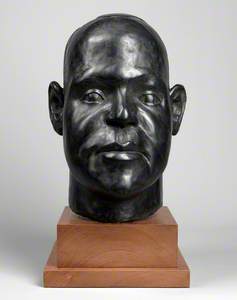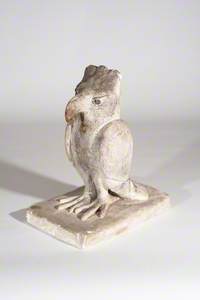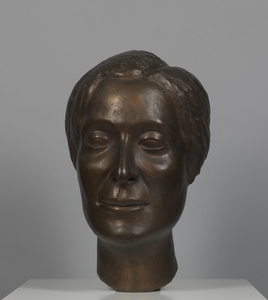Ronald Moody, a man from the small Caribbean island of Jamaica, made big sculptures, many in England, and showed them all over the world.
Moody arrived in England in the 1920s to study dentistry at King's College London Dental School, but began sculpting in the early 1930s after a visit to the British Museum's collection of Egyptian artefacts.
Moody expressed many ideas using a variety of different source materials. He first experimented with plasticine and dental plaster, like that used in his dental surgery. His formal sculptures started with wood and progressed to using concrete, bronze, brass, and other materials.
Moody's work is a combination of internal and external examination, and I believe, like many artists, his practice emerged by looking at himself first, his image and view of the world, before he started to look outwards.
His Self Portrait series (1937) shows the artist rendered in a number of contrasting brass sculpture manifestations. Self Portrait 2 has hollowed out eyes, giving a feeling of detachment and cold emptiness. While Self Portrait 3, carved in stained elm, reveals a depth of warmth that, even with eyeballs present, shows an acceptance of a perpetual sense of concern and world-weariness, perhaps indicated by the lines of the wood that seem to reflect a deep internal frown and continual worry.
His first breakthrough piece of 1934–1935, Wohin, was a larger-than-life carved head – inspired by the composer Franz Schubert's Wohin?, which is essentially the root question that influenced all of Moody's subsequent work: where? Where are you going? Do you know where we are?
Wohin had such a powerful impact on the art world that it launched Moody's professional career and led to solo exhibitions in Paris and Amsterdam. Moody worked beyond the boundaries of his locality, working in his own style to create works that are admired and respected by artists in a multitude of different societies.
Following the outbreak of the Second World War, Moody returned to England, leaving his recent sculpture hidden in Paris at his friend Kobus Hooykaas' studio.
War interrupted the career of Moody as an artist. Midonz (1937), one of his twelve sculptures included in an American exhibition, was lost to him when it was not returned following the war. The sculptures were shipped to the Harmon Foundation in 1939 for an exhibition of 'Contemporary Negro Art' at the Baltimore Museum of Art. Moody never saw Midonz again, however his niece, and trustee of his archive, Cynthia Moody, managed to locate Midonz in 1994 and had it returned to the UK from the Hampton University Museum in Virginia – 57 years after it was loaned for the exhibition.
Midonz was one of twelve works Moody created in 1937. This was one of a trinity of heroic sculptures (with Wohin and Tacet) carved in elm. The naming of Midonz has remained secretive and mysterious, with mythological suggestions; the sculpture represents the earliest woman, one who is in the process of changing from physical matter into spiritual form. The trio of heroic structures was, according to Moody's notes, an 'exploration of the inner life of man, and the possibility of evolution through self-awareness', and an attempt to capture an extraordinary sense of spiritual unity. There is a sense of emptiness in the spaces around his work.
Midonz was one of Moody's favourites of his large sculptures, that epitomised 'the tremendous inner force, the irresistible movement in stillness', and a 'harmonious blending' of pre-Columbian and Ancient Egyptian cultures – the very essence that Moody first encountered in 1928 in the British Museum that had compelled him to begin sculpting.
He produced several other wood-carved pieces during the 1930s, including Johanaan (1936).
Johanaan is another large sculpture carved in elm, a torso that stands 155cm high. Johanaan, an androgynous figure, was named after John the Baptist and chosen as an everyman and an act of faith to represent the universality of humanism. The facial expression is one of stillness and serenity, while the grand scale of the carving moves the viewer to deep meditation of both the figure, of self, and of one's place in the world.
Can Moody's work be seen as traditional or contemporary? Moody was an artist and interpreter, an observer of life, who used mythologies of the past and hopes for the future to influence his strongly individualised perceptions.
Mythology is linked to dreaming, in a space that extends between the living and the dead.
Mythology is a place of uninterrupted transformation of the body.
Savacou (1964) by #NoColourBar exhibitor Ronald Moody stands proud outside the University of the West Indies... pic.twitter.com/pwoBwtziAb
— No Colour Bar (@nocolourbar) August 15, 2015
Does knowing about Moody's influences help or hinder the interpretation of his work? Is it important, for example, to be aware of the Caribbean mythologies that were a part of his cultural upbringing, and may have influenced the creation of Couroumon (1962) and Savacou (1964).
Couroumon was the original incarnation of a later, larger, cast aluminium sculpture of Savacou, a deity in Carib mythology who controlled the elements of thunder and strong winds, and had the ability to transform into a bird and a star.
When viewing Moody's vast catalogue of works, I have questioned: 'Do Moody's works recognise the friction in communities and invite the continual destruction or reconstruction and embrace of new communities?'
Within the wood, concrete, brass, or aluminium, Moody discovers his response to the conflict around him, and displays his connections, disconnections and hopes for his past and present communities. The artworks are a silent, contained explosion of Moody's thoughts and feelings in a permanently captured visual formulation of whatever material he chose to express his internal and external journeys.
Moody confronts the barriers at his personal social frontiers. He encapsulates the mobility problems linked with the historical displacement associated with the geographical territories of his past, present and future, while also identifying his place as one of unrestricted movement in the world.
Moody's work brought diversity to the British artistic landscape with his individualised perceptions of the world. His art is both private and public; created in private, displayed in public – but with some pieces of his work also held in many private collections.
Moody stated that his work reflected his very existence and presence in Europe and the Caribbean – a perpetual state of friction. As an artist eager to fuse his new European identity with his Caribbean roots, Moody moved to Paris where he created Male Standing Figure – the Priest. This small, serene-looking piece, only 75 cm in height, was carved from the deep hues of rosewood.
It has often been seen as a symbol of resistance and resilience. Within this piece, I see the possibility of a seismic shift between introspection and outrage, from the position of quiet confidence and authority.
A similar reading can be made of Moody's creation of a bust of his elder brother Dr Harold Moody, the social activist. The bust portrays a serene head with a benign outlook that belies the depth of action and activity circulating within.
Harold Moody (1882–1947)
(based on a work from 1946) 1997
Ronald Moody (1900–1984) 
Dr Harold Moody, like his parents and siblings, was a high achiever. However his arrival in Britain from Jamaica in 1904 led him to discover that the colour bar and racial discrimination were ever-present.
Despite Dr Moody winning several prestigious prizes, prevailing prejudice prevented him from obtaining suitable positions in hospitals. He eventually set up his own doctor's surgery in Peckham, London in 1913, and in the same year married white British nurse Olive Tranter. Dr Moody was a founding member of the Leagues of Coloured Peoples in Tottenham, in March 1931 – the aims of the group were to stop the effects of the colour bar in Britain and to protect the educational, social, political and economic interests of their members.
Ronald Moody was an alchemist. He commenced the work of representation in multiple media, ensuring that whoever encounters his work takes the next step in the alchemy chain – and so the process of awakening human consciousness and transmutation through his art continues through the ages and around the globe.
Marjorie H. Morgan, playwright, director, producer and journalist
